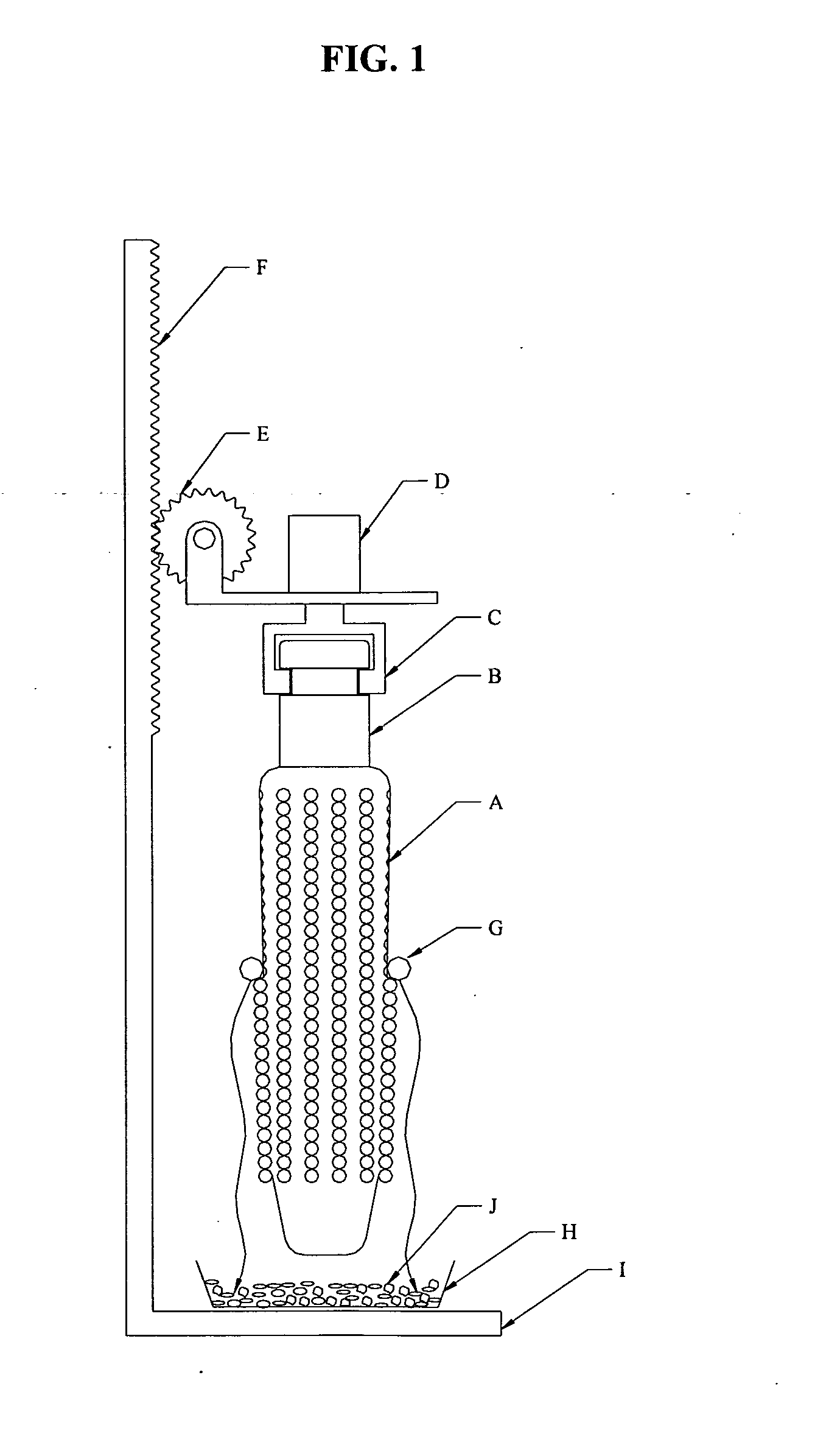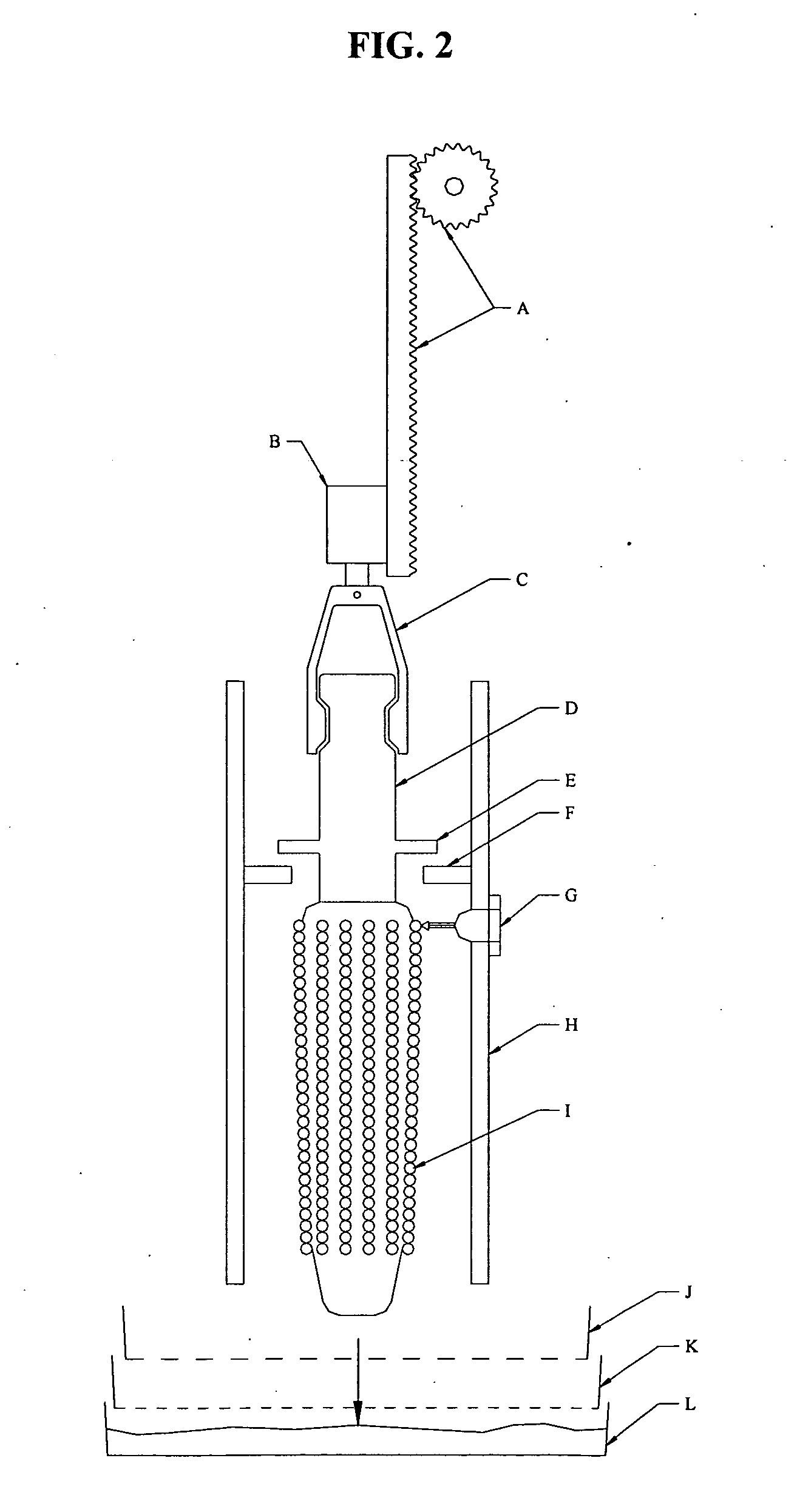Method and apparatus for substantially isolating plant tissues
a plant tissue and tissue technology, applied in biochemistry apparatus and processes, specific use bioreactors/fermenters, after-treatment of biomass, etc., can solve the problems of time-consuming and laborious preparation of tissues for plant propagation, regeneration and transformation, laborious manual excision of embryogenic tissues, and risks for ergonomic injury to workers
- Summary
- Abstract
- Description
- Claims
- Application Information
AI Technical Summary
Benefits of technology
Problems solved by technology
Method used
Image
Examples
example 1
Method to Extrude Multiple Corn Embryos
[0129]This example describes a method using mechanical positive pressure from an extruder device to produce embryos suitable for tissue culture or genetic transformation.
[0130]The tops of kernels were sterilely removed from an immature ear of corn (Zea mays) with a vegetable peeler. The peeler was pushed from the basal end of the corn ear to the apical end using a slight sawing motion to obtain a quick, sharp truncation of the kernels. While in this instance the individual kernels are truncated to expose the interior tissues, in other embodiments, it may be necessary only to ensure that an opening (such as a puncture or incision or abrasion) is made in the pericarp without actual removal of pericarp material. Where intact embryos are desired (for example, intact embryos for transformation), the size of any opening is preferably sufficient to allow removal of the embryo without damaging it. Opening of the pericarp can be accomplished by using an...
example 2
Visual Confirmation of Embryo Size
[0136]This example describes an improvement to one embodiment of the method of the present invention, as described in Example 1. Using the approach described in Example 1, immature corn embryos need to be as close to the truncated part of the kernel in order to be ejected in the greatest numbers. Variation in immature corn embryo size is an important consideration in gauging the amount of kernel top to remove. Embryos tend to be largest in the mid-section of the ear, with somewhat smaller embryos towards the ends. Smaller embryos, e.g., smaller than about 1.5 millimeters in length are more difficult to remove unless they are close to the truncation.
[0137]One way to ensure that enough of the kernel has been decapitated above embryos of varying sizes is to observe the cob during the decapitation process under low magnification. For example, low magnification goggles (e.g. Donegan Opti-VISOR headband binocular magnifier equipped with a No. 7 lens, whic...
example 3
Extrusion of Embryos and Endosperms
[0138]This example describes an improvement to one embodiment of the method of the present invention, as described in Example 1. Powered devices may be used to assist in the extrusion of embryos and endosperm. For example, a power chisel such as a WeCheer 320 power chisel (WeCheer Industrial Co., Taichung Hsien, Taiwan, R.O.C), fitted with a rounded extruder device, can be used to reduce the force a person needs to exert to eject the embryos and endosperms. Other powered devices are available and can be similarly used. Preferably, the “chisel” portion of such a tool (or any part of the tool that might come into contact with the embryos) can be conveniently sterilized, for example, by insertion into a bead sterilizer.
[0139]In one experiment, the blade of a stainless steel weighing spatula was bent back on itself to provide an extruder device having a rounded leading edge. After insertion into a WeCheer 320 power chisel, a portion about 10 centimeter...
PUM
| Property | Measurement | Unit |
|---|---|---|
| osmolality | aaaaa | aaaaa |
| molecular weight | aaaaa | aaaaa |
| molecular weight | aaaaa | aaaaa |
Abstract
Description
Claims
Application Information
 Login to View More
Login to View More - R&D
- Intellectual Property
- Life Sciences
- Materials
- Tech Scout
- Unparalleled Data Quality
- Higher Quality Content
- 60% Fewer Hallucinations
Browse by: Latest US Patents, China's latest patents, Technical Efficacy Thesaurus, Application Domain, Technology Topic, Popular Technical Reports.
© 2025 PatSnap. All rights reserved.Legal|Privacy policy|Modern Slavery Act Transparency Statement|Sitemap|About US| Contact US: help@patsnap.com



